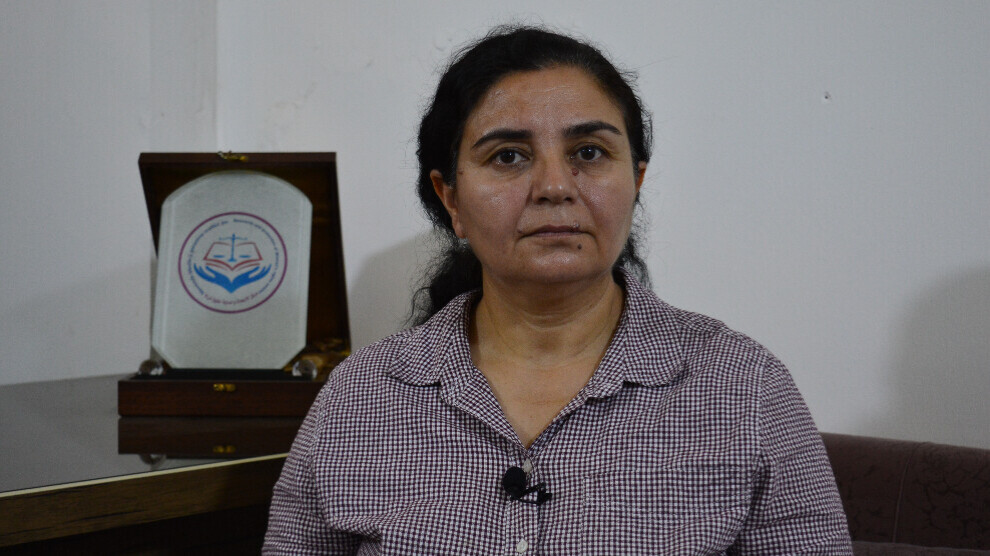Mizgîn Hesen: Women must struggle until they get their freedom back
Speaking about the killing of Jina Mahsa Amini by the Iranian police, Mizgîn Hesen, an executive of the Center for Research and Protection of Syrian Women's Rights, said, “Women must struggle until they get their freedom back.”

ROJ HOZAN
Qamishlo- Jina Mahsa Amini was tortured to death by Iranian police. The killing of Jina Mahsa Amini leads to the acceptance of the will of women in Rojhilat Kurdistan and Iran. Women all around the world take to the streets and chant, “Jin Jiyan Azadî (English: Women, Life, Freedom)”. Jina Mahsa Amini has become a symbol of women's solidarity and the spark of revolution lit in Rojhilat Kurdistan. NuJINHA spoke to Mizgîn Hesen, an executive of the Center for Research and Protection of Syrian Women's Rights, about the protests of women following the killing of Jina Mahsa Amini.
“Women are subjected to torture for a strand of hair”
Pointing out the Sharia law practiced against women in Iran, Mizgîn Hesen said, “The Iranian regime has many misogynist laws. One of them is the hijab law, which requires women and girls to wear a headscarf in public. Women are subjected to torture when a strand of their hair is visible. If a woman rises up against the system, she pays the price with her life. In 1969, during the Shah's reign, Iranian women had legal rights. They could be lawyers or politicians. However, women’s rights and roles were limited with the rise of Ayatollah Khomeini. For instance, Shirin Ebadi is a lawyer and a former judge but she was arrested along with several of her colleagues. A lawsuit was filed against them and they had to apply to the European Court of Human Rights to obtain their rights.”
FGM and forced marriage
Underlining that women are subjected to inhuman practices in Iran, Mizgîn Hesen said, “Now, the female genital mutilation (FGM) is legal in Iran. The rate of FGM increased to 16 percent in 2015. The Iranian regime is afraid of women holding awareness-raising activities against FGM. However, women are afraid of carrying such activities due to the existing laws. Another inhuman practice in Iran is child marriage. The legal age for marriage in Iran is 13 years for girls and 15 years for boys but younger children are married with a father's permission. Such practices do not exist in the culture and life of the Kurds. For this reason, Kurdish women living in Iran do not accept such practices and protest them. There is another immoral marriage in Iran called Sigheh, which allows men to marry a woman for a predetermined period of time, have intimate relations with her, and then leave her without consequences. Such practices cause social problems.”
565 women were killed
Speaking about the rate of femicide cases in Iran, Mizgîn Hesen said, “Today, we see that women's revolutions and movements get stronger all around the world. However, women are killed in Iran for a strand of hair. In recent years, 565 women have been killed in the name of “honor” and more have been executed and stoned to death. All kinds of methods are used against women. Women are ignored in society. The women’s uprising in Iran is the uprising of all women. Women fight for equality and freedom. The practices carried out against women in Iran are inhuman practices. The Universal Declaration of Human Rights says all human beings are born free and equal in dignity and rights. As the declaration says, women are free but not in countries like Iran. In Iran, women cannot do whatever they want. In addition, they cannot participate in politics or decision-making positions. Only 17 of the 275 MPs in the Iranian Parliament are women. And they do not have any decision-making positions. Struggle is the only response to the killing of Jina Mahsa Amini and the inhuman practices against women.”
